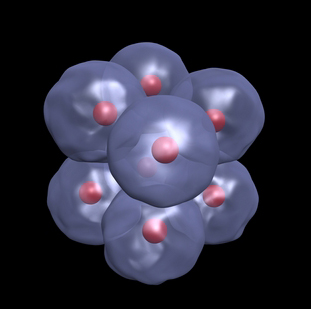 The primary limitation of using stem cells as a possible means of curing HIV has been the difficulty of growing these cells in sufficient quantities. A research paper published in the prestigious journal Science in September 2010 reported that a method of promoting stem-cell growth had been found. This breakthrough, by Dr. Anthony Boitano of the Scripps Research Institute and colleagues, caught the eye of amfAR’s Senior Scientific Consultant Dr. Jeffrey Laurence. Dr. Laurence realized that it opened the door to talking about the potential of using stem cells to cure HIV.
The primary limitation of using stem cells as a possible means of curing HIV has been the difficulty of growing these cells in sufficient quantities. A research paper published in the prestigious journal Science in September 2010 reported that a method of promoting stem-cell growth had been found. This breakthrough, by Dr. Anthony Boitano of the Scripps Research Institute and colleagues, caught the eye of amfAR’s Senior Scientific Consultant Dr. Jeffrey Laurence. Dr. Laurence realized that it opened the door to talking about the potential of using stem cells to cure HIV.
Until that point, the focus was on immune cells. One strategy involved removing immune cells from a person living with HIV, genetically modifying them to make them resistant to HIV infection, growing them to a sufficient quantity, and injecting them back into the patient. Dr. Laurence realized that using stem cells instead of immune cells would confer one major advantage: unlike immune cells, they can morph into cells of any kind, a flexibility that makes them better able to transform the entire immune system rather than just a single subset of cells.
“One of amfAR’s great strengths is its ability to act as a convener,” said Dr. Laurence . “We bring top scientists together for a couple of days around a particular topic, enabling them to share data, assess obstacles and challenges, and figure out how to move the ball forward.”
So in September 2011, amfAR brought together a dozen leading researchers working on the frontiers of gene therapy. Over the course of a two-day meeting at the Villanova University Conference Center on the outskirts of Philadelphia, participants, including Dr. Boitano, discussed the progress and challenges of stem-cell research in the context of HIV.
“The amfAR meeting was held in part to discuss strategies for improving this kind of therapy— from using different cell types, to different vectors for modifying genes, to ways of expanding the cell population to be transplanted,” reported Brendan Maher, who covered the meeting for leading scientific journal Nature. “The mood was upbeat, despite the many challenges and questions that remain about whether a cure is possible.”
There’s also the issue of cost. If a gene therapy approach to curing HIV were to prove successful, would it ever be cheap enough to be brought to scale, bearing in mind that most people with HIV (some 25 million) live in Sub-Saharan Africa? consequence of the amfAR think tank was a review of stem-cell-based gene therapy approaches to curing HIV published in the February 3 issue of the journal Cell Stem Cell. Three of its four authors participated in the think tank, never having met one another in person. The review cites amfAR for its “contributions to moving the cure agenda forward.”
In a nice piece of symmetry, the February 3rd issue of Cell Stem Cell also reported on some new research by a group of scientists including Dr. Boitano. One of the difficulties of cultivating populations of stem cells is that they rapidly differentiate into cells with a particular function, so they don’t remain stem cells for very long. Dr. Boitano appears to have found a method of boosting populations of stem cells by inhibiting the signals that make them differentiate.
“The new technologies being developed in support of gene therapy approaches to curing HIV are incredibly exciting,” said Dr. Rowena Johnston, amfAR vice president and director of research. “We’ve been supporting research in this area for several years and hope to exploit its enormous potential.”